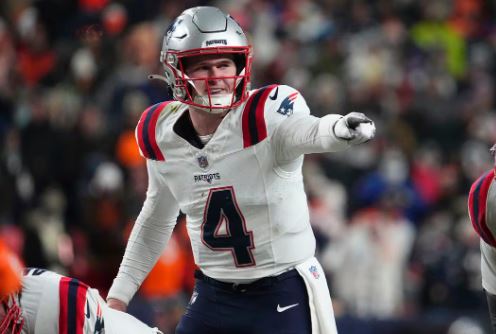In the world of sports, a draft pick is a pivotal moment for teams, where they select young talent to bolster their roster. These picks can shape the future of a franchise, with successful selections leading to championships and dynasties. However, the consequences of an unsuccessful draft pick can be far-reaching and profound, impacting not only the team’s performance on the field but also its financial stability, public perception, and organizational dynamics.
The Consequences of an Unsuccessful Draft Pick
When a team’s draft pick fails to live up to expectations, the repercussions can be immediate and severe. The team may suffer from a lack of production from the player, leading to on-field struggles and losses. Additionally, the presence of an underperforming player can disrupt team chemistry and cohesion, further exacerbating the team’s woes.
Financial Ramifications
The financial implications of an unsuccessful draft pick cannot be understated. Teams invest significant resources in scouting, drafting, and developing young talent, only to see their investment go to waste when a player fails to meet expectations. Moreover, the salary cap implications of a high draft pick underperforming can hamstring a team’s ability to make moves in free agency or retain key players.
Impact on Team Performance
The performance of a team can be directly impacted by the underperformance of a draft pick. When a highly-touted prospect fails to deliver on the field, it puts additional pressure on the rest of the team to compensate for their shortcomings. This can lead to a domino effect, where the entire team struggles to find its rhythm and confidence.
Public Relations and Fan Perception
In addition to on-field consequences, unsuccessful draft picks can also damage a team’s reputation and standing in the eyes of its fans and the media. Fans invest their time, money, and emotions into supporting their team, and when a draft pick fails to pan out, it can lead to feelings of disappointment, frustration, and even betrayal. Media scrutiny can further exacerbate the situation, putting additional pressure on the team and its management.
Pressure on Management and Coaching Staff
The failure of a draft pick can also have significant implications for the team’s management and coaching staff. They are responsible for making personnel decisions and developing players, and when a high draft pick fails to meet expectations, it reflects poorly on their judgment and ability to evaluate talent. This can lead to increased scrutiny from team owners, stakeholders, and fans, and in some cases, even put their jobs at risk.
Case Studies
Numerous examples exist of high-profile draft busts that have had a lasting impact on the teams that selected them. From quarterbacks who failed to live up to their potential to can’t-miss prospects who flamed out due to off-field issues, these cautionary tales serve as a reminder of the risks and uncertainties inherent in the draft process.
Strategies for Mitigating the Risks
While the draft will always carry a degree of uncertainty, there are steps that teams can take to mitigate the risks associated with selecting young talent. Comprehensive scouting processes, utilizing analytics and data-driven decision-making, and investing in player development programs can all help increase the likelihood of selecting players who will succeed at the next level.
The Role of Development Programs
Once a player has been drafted, it is crucial for teams to provide them with the support and guidance they need to reach their full potential. This includes investing in resources such as coaching, training facilities, and medical staff, as well as creating a supportive environment where players can thrive both on and off the field.
Adapting to Unforeseen Circumstances
Despite the best-laid plans, not every draft pick will pan out as expected. When faced with adversity, teams must be willing to adapt and adjust their strategies accordingly. This may involve making difficult decisions such as cutting ties with underperforming players or reevaluating their approach to player development.
Balancing Short-Term Needs and Long-Term Goals
One of the key challenges for teams is balancing their short-term needs with their long-term goals. While it may be tempting to select a player who can make an immediate impact, teams must also consider the long-term implications of their decisions and prioritize sustainable success over short-term gains.
Fan Engagement and Transparency
In an age of increased connectivity and social media, fan engagement and transparency have never been more important. Teams must communicate openly and honestly with their fans about their draft decisions, acknowledging both the risks and rewards associated with selecting young talent.
The Psychological Toll on Players
It’s also essential to consider the psychological toll that an unsuccessful draft pick can have on the player themselves. Dealing with the pressure and expectations of being a high draft pick can be incredibly challenging, and players may struggle to cope with the scrutiny and criticism that comes with falling short of expectations.
Rebuilding and Redemption
Despite the challenges they may face, it’s important for players to remember that setbacks are not necessarily permanent. With hard work, determination, and the right support system in place, players can overcome initial setbacks and go on to have successful careers in professional sports.
Conclusion
The consequences of an unsuccessful draft pick in sports can be wide-ranging and profound, impacting not only the team’s on-field performance but also its financial stability, public perception, and organizational dynamics. By understanding the risks and uncertainties associated with the draft process and implementing strategies to mitigate them, teams can increase their chances of success and build a sustainable foundation for future growth.
FAQs
- How common are unsuccessful draft picks in sports? Unsuccessful draft picks are relatively common in sports, as the draft process inherently involves a degree of uncertainty and risk.
- Can teams recover from a high-profile draft bust? While it can be challenging, teams can recover from a high-profile draft bust by implementing strategic changes and focusing on player development.
- What role do scouts play in the draft process? Scouts play a crucial role in the draft process by evaluating talent, identifying potential draft picks, and providing valuable insights to team decision-makers.
- Are there any notable examples of successful late-round draft picks? Yes, there are numerous examples of successful late-round draft picks who have gone on to have illustrious careers in professional sports.
- How do unsuccessful draft picks impact a team’s long-term strategy? Unsuccessful draft picks can force teams to reevaluate their long-term strategy and make adjustments to their approach to player acquisition and development.






